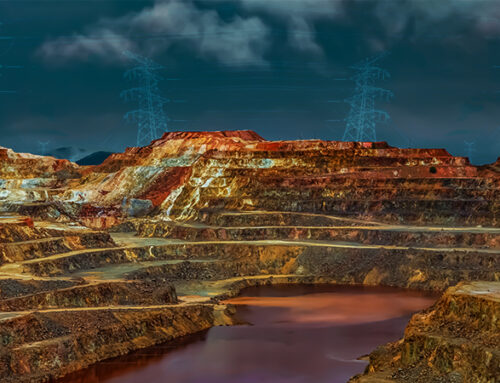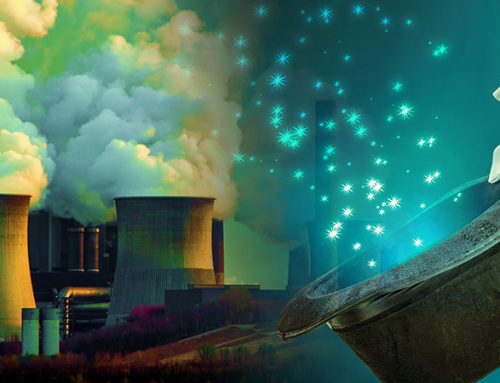In June, Highview Power Storage secured funding from Innovate UK to modify its Liquid Air Energy Storage (“LAES”) system to improve its response times. LAES is an interesting concept, as it provides the potential for bulk energy storage without the geological constraints of technologies such as pumped hydro and Compressed Air Energy Storage (“CAES“).
LAES involves three core processes:
Stage 1. Charging the system The charging system is an air liquefier, which uses electrical energy to draw air from the surrounding environment, clean it and then cool it until it liquefies. 700 litres of ambient air become 1 litre of liquid air.
Stage 2. Energy Store The liquid air is stored in an insulated tank (essentially a giant thermos) at low pressure, which functions as the energy store. This equipment is already globally deployed for bulk storage of liquid nitrogen, oxygen and LNG. The tanks used within industry have the potential to hold GWh of stored energy.
Stage 3. Power Recovery When power is required, liquid air is drawn from the tank(s) and pumped to high pressure. The liquid air is evaporated and superheated to ambient temperature – when the air is released, it expands rapidly and is used to drive a conventional expansion turbine to generate electricity.

The system has a parasitic load of about 10%
Although novel at a system level, the LAES process uses off-the-shelf components and sub-systems that are mature technologies used in a variety of industrial applications, meaning the costs are well known and the technology risk is relatively low. The lifetime of these components is typically in excess of 30 years, and the most expensive component in the system is air liquefaction equipment.
“A lot of the equipment comes from the oil and gas industry. It is all catalogue equipment,”
– Richard Riley, business development manager for North America, Highview Power Storage.
Is LAES commercially viable?
According to the Highview, the LAES process is between 25% and 70% efficient, meaning that up to 70% of the input electricity can be recovered from the cryogenic air compression process.
A recent study by the University of Pisa suggests that efficiencies above 80% can be achieved:
“Liquid Air Energy Storage (LAES) represents an interesting solution due to its relatively large volumetric energy density and ease of storage. Different process schemes for hybrid plants were modelled in this study with Aspen HYSYS® simulation software and the results were compared in terms of equivalent round-trip and fuel efficiencies. Equivalent round-trip efficiencies, higher than 80%, have been calculated showing that the proposed configurations might play an important role for power systems balancing in the near future.”
Highview Power Storage’s standard LAES system (described below) captures and stores heat produced during the liquefaction process and integrates this heat to the power recovery process.
LAES systems can also integrate waste heat from industrial processes, such as thermal power generation or steel mills, recovering additional energy. Similarly, the cold air exhausted in the re-gasification process can be captures and re-cycle in the liquefaction phase. The system could also integrate waste cold from industrial processes such as LNG terminals.
According to Highview, the minimum size for a commercial scale LAES plant is around 10 MW, which would cost between US$40 million and US$60 million to construct. The levelised cost, based on Lazard’s estimates for thermal energy storage, are competitive against other bulk storage solutions when other constraints are taken into account.
LAES hybrid solution may offer more flexibility
Highview Power’s £1.5 million funding from Innovate UK will allow it to install supercapacitors and flywheel technology to its existing 5 MW, 15 MWh LAES facility at Viridor’s Pilsworth landfill gas plant in Bury, near Manchester. The plant, received £8 million from BEIS in 2014 and is due to come online by the end of the year. It will operate for at least one year, providing energy storage as well as converting low-grade waste heat from the landfill gas engines from heat to power.
A LAES system has a ramp rate similar to a gas-fired peaking plant, so the addition of flywheels and supercapacitors will give the system faster response times, opening additional revenue streams from frequency support services.
Highview has previously tested and demonstrated a fully operational 350-kW/2.5-MWh LAES pilot plant at SSE’s 80-MW biomass plant at Slough Heat and Power in Greater London from 2011 to 2014 – successfully connecting to the UK grid and complying with the necessary regulations and inspections.
German industrial gas producer, Linde has also developed a LAES solution, and has a 80 MW system based on available components that is ready to be demonstrated.
“The system consists of mature and proven technology only: turbomachinery, heat exchangers and tanks are all available, proven and provide significant economy of scale. We expect LAES to be a competitive storage alternative in applications above 50 MW and for storage durations from 2-20 hours. The system can be built either as a pure power-to-power storage or combined with usage of industrial waste heat or fuel; in the latter case it can also be run as a gas turbine peaker (even when the storage is empty).
The main advantage in comparison with classic large-scale alternatives (pumped hydro / compressed air energy storage) is that no geology is involved; therefore LAES can be built anywhere, erection time is short, and it is much less prone to public resistance and geological risks,”
– Linde
If these benefits are real, then the question is why no-one has tried to exploit this technology before. According to Highview CEO Gareth Brett, it’s simply that the separate industries have not “found” one another:
“If you take our system, the front end of it comes from the industrial gas business. Apart from having huge electric bills, they’re not really thinking about selling energy. The other end of our system comes from power station technology – the utility business doesn’t generally think about cryogenic gases. To put the two together, you’ve got to have a foot in both camps.”
Clearly, there are drawbacks to Highview’s approach, not least the need for an available source of waste heat that could limit its use. But these limitations might be easier to overcome than geological constraints faced by pumped hydro and CAES solutions. With the exception of pumped hydro, most new bulk storage solutions – CAES, flywheels, and so on, all require further work to prove their commercial viability. LAES, with its reliance on established technologies, could be a useful addition to the energy storage portfolio.
The caveat, as always is, that while bulk storage is certainly desirable in an increasingly intermittent electricity system, the sheer volumes of storage required to fully balance a system with high renewables penetration is unfeasibly large.







I read this blog post on LAES, it dates back to 2017, which is now 6 years ago. Is it possible have an update on this, as the discussion about replacing fossil fuels by renewables always seems to boil down on the medium-term storage of energy. Balancing the grid (that is, taking care of very short peaks or outages, and changes in frequency) may be done most effectively with LiION batteries, or any other ‘chemical battery’ available. It is the medium-term storage (day-night, short periods of low-wind or less sunshine) that is the ‘hottest’ topic now. We are looking to Hydrogen, but that’s probably not suitable for this purpose, beging more a energy carrier for industrial processes.